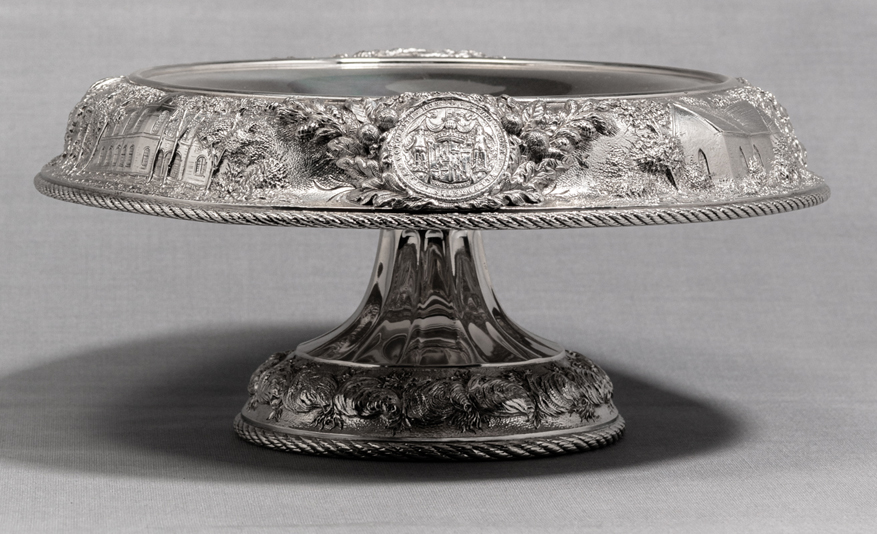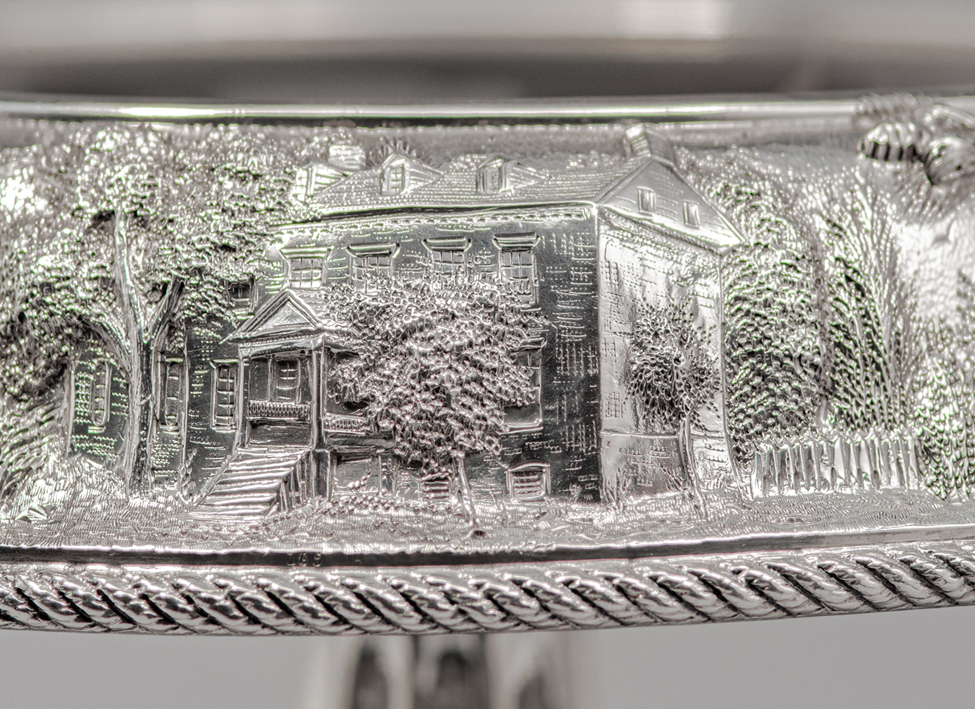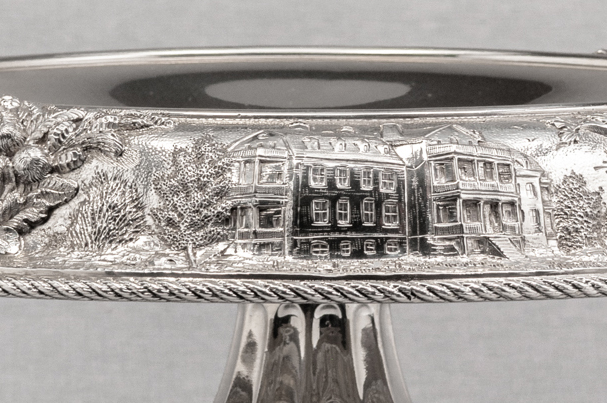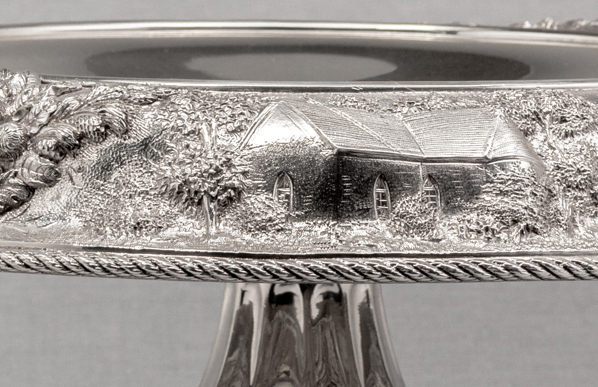Compote Dish, Dorchester County
From the USS Maryland Silver Service

Maker: Samuel Kirk & Sons (1815-1979)
Object: Compote Dish, Dorchester County
Date: 1906
Medium: Sterling Silver
Dimensions: Overall height, 4 1/2"; Overall diameter, 10 1/8"; Diameter of base, 5”
Accession number: MSA SC 1545-0927-5
The USS Maryland silver service includes a total of four compote dishes representing Caroline, Dorchester, Queen Anne’s, and Worcester counties on the Eastern Shore. The exact date and legal origin of Dorchester County are unknown, but it was in existence by February 16, 1668, when a writ was issued to the county sheriff by the Lord Proprietary. It was named for Sir Edward Sackville (1590-1652), the 4th Earl of Dorset, a family friend of the Calverts.
While the four scenes on each piece are unique to that particular county, the overall appearance of each compote is identical. The Great Seal and the Cruiser are each surrounded by sprays of oak, chestnut, sassafras and linden. Oyster shells around the base connect the pieces to the Eastern Shore, and the rope borders symbolize the nautical theme of the service.
1. Warwick Fort Manor House (number 165)

3. Cambridge Maryland Hospital (number 166)

Scenes across the bottom (right to left)
1. Old Trinity Church (number 164)

2. USS Maryland Cruiser
3. Courthouse at Cambridge (number 167)
As the county courthouse, it was the center of Cambridge’s political and economic life. The courthouse’s connection to the legacy of slavery is recognized, and in 2005 it was named by the National Park Services as an official site of the Underground Railroad Network to Freedom. In 2022, “Beacon of Hope,” a 12-foot bronze sculpture featuring Harriet Tubman by Wesley Wofford was installed in front of the courthouse.

|
This web site is presented for reference purposes under the doctrine of fair use. When this material is used, in whole or in part, proper citation and credit must be attributed to the Maryland State Archives. PLEASE NOTE: The site may contain material from other sources which may be under copyright. Rights assessment, and full originating source citation, is the responsibility of the user. |
© Copyright August 07, 2024 Maryland State Archives
